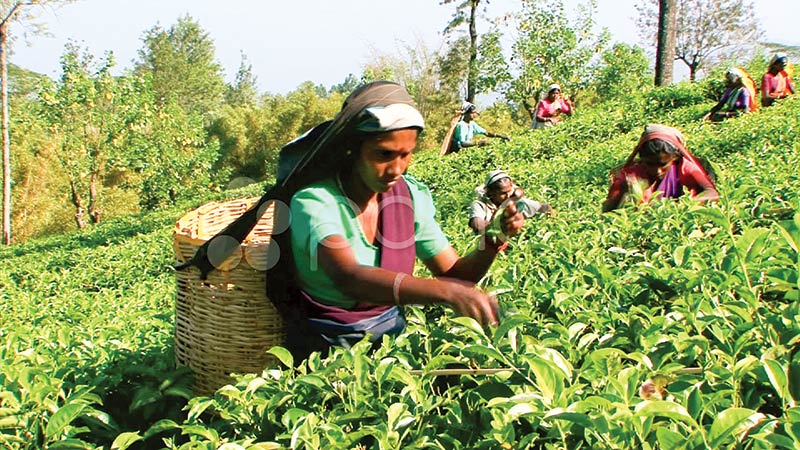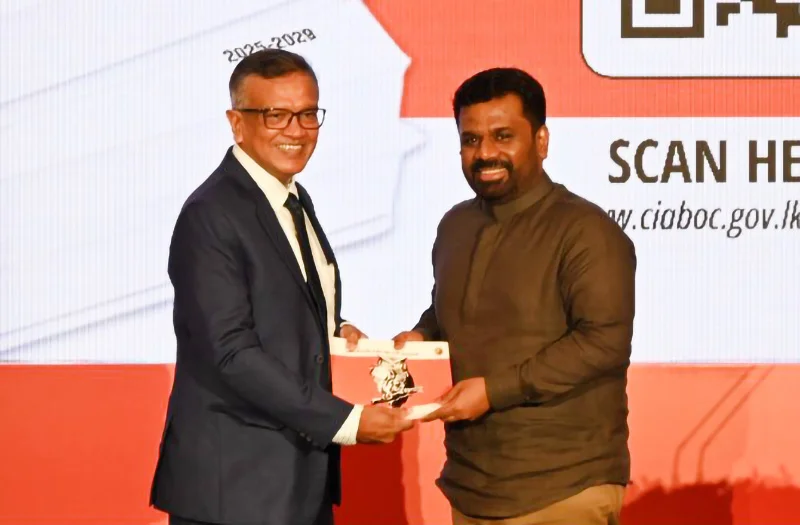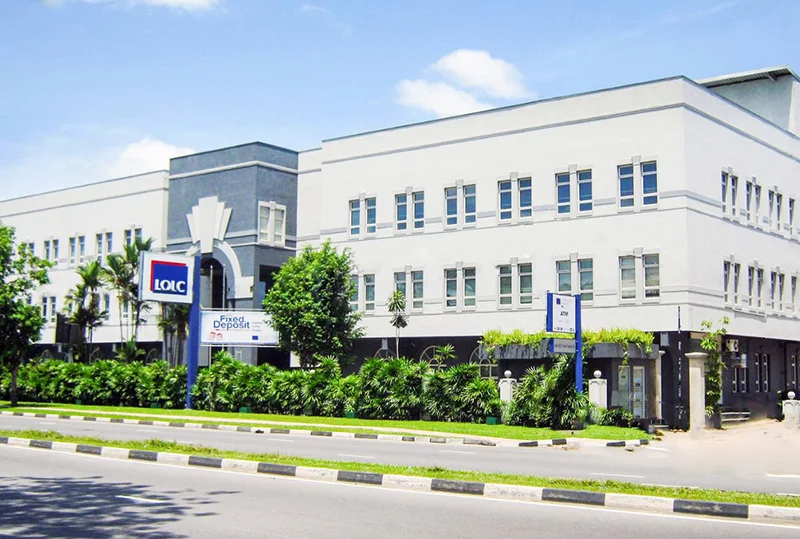Business
Right of Response to Caritas Sri Lanka

We refer to the published studies by Caritas Sri Lanka titled Research Study on the Culture and Identity of the Plantation Community in Sri Lanka and Right to Education of the Children of the Plantation Community.
At the outset, we express our appreciation to the Catholic Bishops Conference and Caritas Sri Lanka for their interest and recommendations aimed at creating an enabling environment for preserving and promoting the culture and identity of plantation communities. We recognize that the recommendations in these publications encompass a wide range of areas, including inclusive development policies, education and awareness programs, cultural preservation funding, legal protection, economic empowerment, and the promotion of culture-based tourism. While we respect the commitment of Caritas to these communities, we believe the data used in their reports should be revisited to reflect today’s on-the-ground realities. Our goal is to offer updated information so that all stakeholders can align on how best to support plantation communities most effectively today.
In that regard, we note that many of the statistics cited in the report are based on research that dates as far back as 2003/2004, failing to account for the significant progress and developments made in plantation communities since then. As the Planters’ Association of Ceylon, which represents the interests of Regional Plantation Companies (RPCs) in whose estates reside an estimated 42% of Malaiyaha Tamil community, we are compelled to clarify these points and provide a more accurate representation of the current state of these communities. We also acknowledge that further investment and effort is required from all stakeholders, including the Government in order to drive meaningful progress on the several issues. We caution however, that placing the responsibility solely with plantation companies who are only capable of operating within the constraints of employer-employee relationships fails to hold all other stakeholders accountable for their role and capacity to drive broader progress.
Accordingly, we believe It is important at the outset to address the continuous references of this community as Indian-origin Tamils (IOT). While historically, many have referred to this group as Indian-origin Tamils (IOT), today, they are recognized as Sri Lankan citizens with full political and civic rights. As proud Sri Lankans, it’s vital to celebrate the rich diversity within our nation. The Tamil community, with roots in India, is an essential part of our shared heritage. While the term IOT does hold historical and cultural significance, using it exclusively can overshadow the strides this community has made over many generations to achieve these rights, and establish their own identity as Sri Lankans. The term IOT therefore perpetuates an outdated and exclusionary narrative that risks undermining their rightful inclusion within Sri Lankan society. Now commonly referred to as the Malaiyaha community, they are an integral part of the nation’s socio-economic fabric. With a population of approximately 960,000—20% of whom form a vital, actively contributing workforce – which is increasingly transcending the plantation industry.
Education sector challenges
The assertion that education within plantation communities remains chronically underfunded is misleading. With the nationalization of schools, they were incorporated into the mainstream education system. Over time, the education system has undergone significant advancements, supported by consistent government initiatives. This progress underscores the evolution of schooling facilities and the broader education framework, which now aligns with the national mainstream education standards.Since 1977, when the government assumed responsibility for these schools, there has been a steady expansion, and today 863 schools operate within plantation areas.
In parallel, the Regional Plantation Companies (RPCs) with the support of Plantation Human Development Trust (PHDT), have collaborated—often with donor assistance—to establish 1,200 Early Childhood Development Centers (CDCs). These CDCs, staffed by trained professionals, provide not only foundational education for young children but also critical nutritional and developmental support. Through scholarship programs, RPCs have within the means available to them further facilitated opportunities for higher education, with over 100 students from plantation communities entering Government universities each year. With greater support, such positive initiatives could be drastically amplified. While we acknowledge that resource constraints continue to pose challenges, we also wish to give equal and fair emphasis to the tangible gains already achieved. By building on these successes, we aim to ensure that schools serving plantation communities are strengthened, rather than diminished, as Sri Lanka collectively addresses its nationwide education funding needs.
Similarly, health outcomes within RPC-managed plantations have seen vast improvements due to targeted interventions led by RPCs with the support of PHDT. The infant mortality rate, which the publications erroneously state as 60.6%, is now 9.07% under RPC-led estates, aligning closely with national averages. Undernutrition, another cited issue, has also received significant attention, with several targeted programmes having been launched aimed at ensuring comprehensive maternal and child health support to communities within the estates. As a result of these practices, current prevalence of moderate and severe undernutrition stands at 15.57% and 3.9%, respectively, a significant improvement over previous decades.
The studies also portray the housing situation within plantation estates inaccurately. The line rooms, which were historically used for worker accommodation, have been systematically upgraded or replaced under RPC-led initiatives. Over 140,000 housing units have been reroofed, ensuring improved living conditions. In addition, more than 60,000 families now reside in individual/improved housing units with modern facilities. Furthermore, 230,000 individual latrines have been constructed, significantly enhancing sanitation and hygiene within these communities. These ongoing development programs have transformed living conditions, ensuring privacy, sanitation, and dignity for plantation workers and their families. We also note that cultural and identity-related challenges faced by plantation communities are not ignored. RPCs have actively worked to preserve cultural practices while facilitating integration into broader Sri Lankan society. Programs focusing on community engagement, cultural events, and skill development have helped foster a sense of belonging and empowerment. The work carried out by the RPCs with the support of PHDT, trade unions, and government authorities, has been instrumental in driving these advancements. Through this tripartite collaboration, RPCs have achieved measurable progress in improving the quality of life across all facets, including education, healthcare, housing, and economic opportunities.
The Planters’ Association wishes to clarify that the report does not capture the true nature of plantation communities within RPC-managed estates, unfairly painting a negative picture of the entire sector without considering the substantial improvements led by RPCs. This demarcation is necessary to ensure a fair and accurate understanding of the progress made and the ongoing commitment to the welfare of plantation communities.
(The Planters’ Association of Ceylon)
Business
National Anti-Corruption Action Plan launched with focus on economic recovery

In a decisive move to stabilize Sri Lanka’s economy and rebuild investor confidence, the Commission to Investigate Allegations of Bribery and Corruption (CIABOC) yesterday launched the National Anti-Corruption Action Plan (NACAP) 2025–2029, with a clear focus on promoting transparency, accountability and economic governance.
Developed with the support of the United Nations Development Programme (UNDP) and funded by the government of Japan—contributing nearly USD 900,000—the initiative aims to address corruption as a critical economic barrier.
The launch, attended by President Anura Kumara Dissanayake, Chief Justice Murudu Fernando PC, and high-level diplomatic and institutional representatives, signals a shift in Sri Lanka’s economic reform narrative. The NACAP is seen not just as a governance tool but as an economic recovery strategy designed to attract foreign investment, improve public finance management and rebuild public trust.
R.S.A. Dissanayake, Director General of CIABOC, noted that corruption, “is more than a legal issue—it is an economic cancer that stifles innovation, distorts markets and deters foreign direct investment.” The establishment of Internal Affairs Units (IAUs) within government institutions is expected to bring internal oversight to public spending and performance, improving the efficiency of state services.
Japanese ambassador Akio Isomata stressed that eliminating corruption is essential for Sri Lanka to regain global investor confidence. “Transparency and good governance are fundamental pillars for sustainable economic development, he said. “For Sri Lanka to attract foreign investment and achieve long-term growth, the effective implementation of this Action Plan is crucial.”
Echoing this, UNDP Resident Representative Azusa Kubota highlighted the importance of aligning governance with economic goals. “The NACAP is a roadmap for transforming Sri Lanka’s economic governance, she said. “It will make corruption visible, measurable, and actionable.”
The NACAP is built on four strategic pillars—Preventive Measures, Institutional Strengthening & Enforcement, Education, and Law & Policy Reform—targeting nine priority areas. These include streamlining state enterprise management, modernizing financial crimes investigation and integrating anti-corruption education into economic policymaking.
The implementation timeline is designed with a phased approach: short-term stabilization, medium-term reform and long-term transformation—ensuring consistent progress toward a more accountable and economically resilient state.
“Corruption ends here. The responsibility of eradicating bribery and corruption will not be passed on to the next generation — it will be resolved by our government today, President Anura Kumara Dissanayake said.
The President stressed it marks a turning point in Sri Lanka’s history. “With the launch of the National Anti-Corruption Action Plan 2025–2029, we are drawing a bold line in the sand. No longer will the fight against corruption be tangled in politics or postponed for the future. Public officials now have six months to bring transparency and integrity to their institutions. After May, the law will act decisively and without exception. This is not just policy — it’s a promise. A new era of accountability has begun and it begins with us.”
By Ifham Nizam
Business
Verdant Capital doubles down: $13.5m now powering LOLC Africa’s MSME expansion

Verdant Capital invests $4.5M more in LOLC Africa, expanding MSME lending across 10 countries and deepening financial inclusion efforts continent-wide.
Verdant Capital has announced that its Verdant Capital Hybrid Fund (the “Fund”) has completed an additional investment of USD 4.5 million in LOLC Africa Singapore Limited (“LOLC Africa”). This investment brings the total investment in LOLC Africa to USD 13.5 million. This follows the initial investment of USD 9 million in LOLC Africa, completed in June 2023. Both investments are structured as holding company loans, and they are being directed towards LOLC Africa’s operating lending subsidiaries in Zambia, Rwanda, Egypt, Kenya, Tanzania, Nigeria, Malawi, Zimbabwe, Ghana, and the Democratic Republic of Congo.
Founded in 1980 in Sri Lanka, LOLC entered the African continent in 2018. Verdant Capital Hybrid Fund is the first external investor in LOLC Africa’s operations, reflecting the Fund’s catalytic investment approach. These investments are driving the expansion of LOLC Africa’s micro, small and medium enterprises (MSMEs) financing footprint across the continent. Additionally, the Fund’s Technical Assistance Facility (TAF), has offered financial support for LOLC Africa’s Social Ratings and Client Protection Pre-Certifications for its subsidiaries in Zambia and Egypt, with further Technical Assistance initiatives in the pipeline.
Business
HNBA’s advisor & partnership channels drive 26% growth

HNB Assurance PLC (HNBA) delivered another year of outstanding financial performance, securing a 7.5% market share and moving a step closer to achieving its ambitious target of 10% market share by 2026. This success was a result of the company’s well-structured strategies, focused on sustainable growth in an increasingly competitive landscape, which yielded impressive results, with its Gross Written Premium (GWP) growing by 26% compared to the previous year.
Over the past four years, HNBA has maintained an average growth rate of 26%, consistently outperforming the industry. A key element of HNBA’s approach has been prioritizing distinctive, value-driven products over high-volume, lower-margin offerings. This strategy has allowed the company to cater to a broader customer base, ensuring inclusivity while maintaining the competitiveness and relevance of its product portfolio
In terms of growth, HNBA’s proactive investment strategy resulted in an 8% growth in investment income, reaching Rs. 6.9 Bn, while Funds Under Management saw a 26% increase. HNBA paid net benefits and claims totaling Rs. 2.9 Bn. The total assets of the company expanded by 24% to Rs. 53.4 Bn, primarily driven by increased financial investments. Additionally, total Life Insurance contract liabilities grew by 25% to Rs. 38.6 Bn, following a surplus transfer of Rs. 1.3 Bn to shareholders.
-

 Business4 days ago
Business4 days agoColombo Coffee wins coveted management awards
-

 Business6 days ago
Business6 days agoDaraz Sri Lanka ushers in the New Year with 4.4 Avurudu Wasi Pro Max – Sri Lanka’s biggest online Avurudu sale
-

 Features5 days ago
Features5 days agoStarlink in the Global South
-

 Business7 days ago
Business7 days agoStrengthening SDG integration into provincial planning and development process
-

 Business6 days ago
Business6 days agoNew SL Sovereign Bonds win foreign investor confidence
-

 Features2 days ago
Features2 days agoSri Lanka’s Foreign Policy amid Geopolitical Transformations: 1990-2024 – Part III
-

 Features5 days ago
Features5 days agoModi’s Sri Lanka Sojourn
-

 Midweek Review2 days ago
Midweek Review2 days agoInequality is killing the Middle Class











